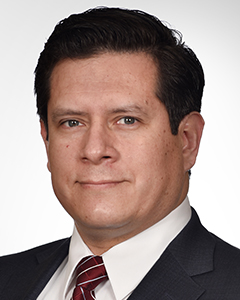It’s natural to feel a bit nervous when heading into bladder, kidney or prostate surgery – about the procedure and how you will control the pain you might have afterward.
But pain is different for each person and depends on how invasive surgery is. In urology, most surgeries are done with small incisions, which help you recover faster and have less pain.
For years, doctors turned to narcotics, also known as opioids, as a go-to medication to help with pain after surgery. Narcotics used for pain management include morphine, oxycodone and fentanyl, among others. That is changing.
Mountains of recent evidence has shown that opioids can be highly addictive, especially with long-term use. This is a problem for people at greater risk for addiction, including those with drug or alcohol dependencies and family members who struggle with addiction.
That's why doctors want to limit the use of these medicines for pain control. Often, your doctor can reduce your pain without using strong medicines, including narcotics. This can be accomplished with medication including non-steroidal anti-inflammatory drugs (NSAIDs) to manage pain.
There are many prescription NSAIDS that can make post-surgical recovery far more comfortable without the risks of narcotics. You’re probably familiar with over the counter (OTC) NSAIDS such as aspirin, ibuprofen and naproxen sodium.
For urologic surgeries, ketorolac, a prescription NSAID for moderate to severe pain, can be very effective. Even though it is non-narcotic, it is a powerful pain reliever meant to be used for about five days after surgery. Studies show that patients gain comparable relief to narcotic medications, often with much lower doses. If your doctor chooses this medication, you will get it as an injection or through an IV while recovering in the hospital. And the oral version can be prescribed to use at home.
Avoiding Medication Challenges
Using strong pain medicines after surgery can cause some complications. One problem is called ileus — when your bowel stops working properly for a while. Using narcotics for a long time can make constipation worse.
Advancements such as laparoscopic and robotic surgeries have made it possible for doctors to perform many urological procedures with small incisions. Smaller incisions for procedures including bladder, kidney or prostate removal mean faster recovery with less pain. This also means patients may need less pain medication and can potentially avoid related challenges and side effects.
For painful conditions such as kidney stones, you and your doctor may choose to let the stone pass naturally. Because it can be uncomfortable, your doctor may opt to prescribe you a powerful NSAID, instead of a narcotic, to relieve pain and relax affected muscles.
If a kidney stone fails to pass on its own, minimally invasive surgical options including lasers and shock wave technologies can eliminate stones with less pain. If you need a stent following a kidney stone procedure, stent technologies have improved for greater comfort. And, of course, your doctor can help you safely manage post-operative pain with multimodal and NSAID medication options that bypass the risks and side effects of narcotics.
Managing your post-surgical pain is important. With new surgical techniques, non-narcotic medication options and better postoperative care, your doctor can ensure you have a safer and more comfortable experience.
Choose to Stay in Touch
Sign up to receive the latest health news and trends, wellness & prevention tips, and much more from Orlando Health.
Sign Up










